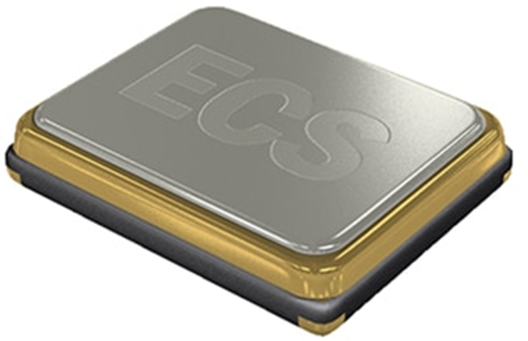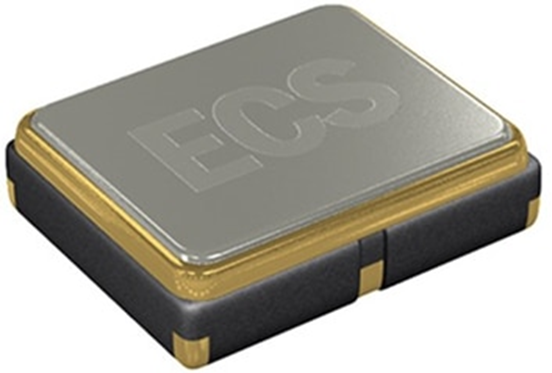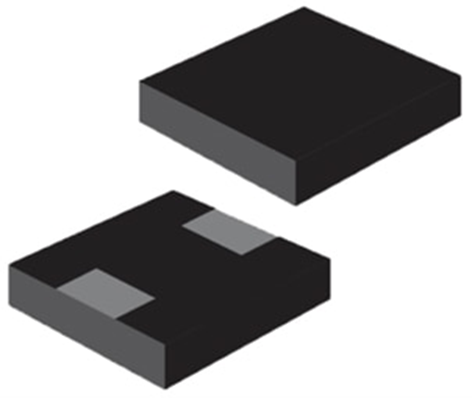 Article Overview
Article Overview
This article provides a detailed introduction to Wi-Fi 7 technology and the importance of frequency control, exploring how technologies such as Automatic Frequency Coordination (AFC), Multi-Link Operation (MLO), and 4K Quadrature Amplitude Modulation (4K QAM) further enhance the performance of Wi-Fi 7. The article points out that the exceptional performance of Wi-Fi 7 is built on high-precision frequency control hardware and introduces key components such as crystals, oscillators, and inductors required for Wi-Fi 7 systems provided by ECS Inc., analyzing their crucial roles in realizing the potential of Wi-Fi 7.Wi-Fi requires a certain range of radio frequencies to enable devices to communicate. For many years, Wi-Fi has utilized the 2.4 GHz and 5 GHz bands, which have minimal interference for devices dialing into channels.The explosive growth in the number of connected devices has overwhelmed capacity. According to the Wi-Fi Alliance, it is expected that by 2024, the number of Wi-Fi-enabled devices will reach 4.1 billion. When millions of devices compete for a limited number of access points and channels within designated bands, communication congestion and connection interruptions are inevitable. It is time to look for another band, which is how Wi-Fi 7 and its predecessor Wi-Fi 6E came into being.With Wi-Fi 7, devices can also utilize the 6 GHz band. Adding a completely new band is like adding a new highway, where the additional lanes can accommodate more traffic. Particularly exciting is that Wi-Fi 7 also increases the channel size from 160 MHz to 320 MHz. Therefore, using 6 GHz can increase the number of channels and make each channel wider, meaning that data flow from more devices will be faster. The end result is greater data throughput, higher reliability, and lower latency.Wi-Fi 7’s data transmission rate exceeds 30 Gbps, providing high-speed, low-latency coverage for a wide range of applications such as AR, VR, high-definition video streaming, and IoT connectivity.However, the challenge of moving to the 6 GHz band is that other entities are already using that band. Federal agencies such as the Department of Defense and NASA use this band for satellite communications and may not want Wi-Fi devices encroaching on their territory.To use the 6 GHz band while ensuring that existing users of the band are not disturbed, additional technology is required, namely Automatic Frequency Coordination (AFC).
Complementary Technologies of Wi-Fi 7
With Wi-Fi 7, we can obtain more and broader access channels. Through a series of complementary technologies, users can extract maximum throughput from the bands, thus utilizing each channel more efficiently.
AFC
AFC (Automatic Frequency Coordination) ensures that the use of Wi-Fi does not interfere with existing users of the 6 GHz band. It works by inputting information about existing users (including antenna locations and their directions) and other parameters into a database. New Wi-Fi 7 connections will check against this database to ensure that they do not infringe on the same spectral neighborhood and cause interference.
Multi-Link Operation (MLO)
Multiplexing refers to the ability to split data streams into multiple units and route them simultaneously through different channels of the same band. MLO in Wi-Fi 7 advances this capability, allowing data to stream across multiple channels and bands. In this case, a single data stream can be routed through 2.4 GHz, 5 GHz, or 6 GHz (depending on availability). This enables faster data transmission and prevents delays even when channels are impaired or unavailable.
4K Quadrature Amplitude Modulation (4K QAM)
QAM can distribute a large amount of information by superimposing signals of different amplitudes and phases, thus better utilizing the spectrum. Since the radio waves do not overlap, the transmission process does not generate noise. 4K means that over 4000 signals can be transmitted simultaneously. Wi-Fi 7 has standardized this technology and reduced latency by increasing capacity.Additionally, Wi-Fi 7 employs Orthogonal Frequency Division Multiple Access (OFDMA) technology, which features multiple Resource Units (MRU) that can segment data into smaller packets, thereby improving throughput. MRU can reduce multi-user latency by 25%, while MLO can improve single-user latency by 80%.
Frequency Control in Wi-Fi
The technology enabling Wi-Fi 7 is impressive; it relies on strict frequency control. Packing data into channels, no matter how efficiently, requires absolute precision; otherwise, signals may interfere with each other, leading to poor performance.The new Wi-Fi standard requires both devices and access points to utilize modern radio equipment. These powerful radio devices can simultaneously tune into multiple bands, bypassing the reserved channels described by AFC, and utilize 4K QAM to fill the spectrum with dense information. They rely on electronic components with extremely low phase noise and high stability to ensure stable signal transmission.Minimizing phase noise and jitter is crucial for maintaining data integrity and reducing error rates.Now merely having a stable frequency is not enough; signals must cope with attenuation caused by time and temperature changes. Vibration, shock, and long-term degradation can affect performance and need to be considered during the design phase.
Frequency Control Components
Crystals, oscillators, and power inductors are essential for providing the high-precision frequency control required for Wi-Fi systems.Oscillators perform all the tasks necessary for data transmission, including generating stable signals, ensuring time synchronization for all communications, and determining the carrier frequency required for operation. Crystals are typically combined with oscillators to fine-tune the output generated by the oscillator, much like a tuning fork, keeping the frequency signal highly focused and precise. When inductors are combined with capacitors, they form LC circuits that allow Wi-Fi systems to focus on specific bands and filter out external noise.ECS Inc. produces a variety of crystals, oscillators, and inductors required for Wi-Fi 7 systems. For example, ECS’s surface-mount (SMD) crystals come in various package sizes and offer a wide temperature range of up to +150°C.The ECX-1637B series (Figure 1) is ideal for wireless applications. They are compact SMD crystals with a 2.0 mm x 1.6 mm x 0.45 mm 4-pad package. Their first-year aging rate is ±1 ppm, with tolerances and stability of ±10 ppm over a temperature range of -30°C to +85°C. Figure 1: The ECX-1637B low-aging compact surface-mount (SMD) crystal has a wide frequency range from 16 MHz to 96 MHz, making it very suitable for wireless applications. (Image source: ECS)The ECX-2236B series features SMD quartz crystals with low ESR and first-year aging as low as ±1 ppm.The ECS-33B series has a frequency range of 10 MHz to 54 MHz, with a minimal ±1 ppm first-year aging rate over a standard industrial temperature range of -40°C to +85°C. These characteristics are very suitable for modern IoT, wireless, and Wi-Fi applications.ECS also sells a range of ceramic oscillators.The ECS-2520MV series is suitable for a range of 0.750 MHz to 160 MHz, while the ECS-2520SMV series is best suited for a range of 8 MHz to 60 MHz. Both series have a temperature range of -40°C to +105°C.
Figure 1: The ECX-1637B low-aging compact surface-mount (SMD) crystal has a wide frequency range from 16 MHz to 96 MHz, making it very suitable for wireless applications. (Image source: ECS)The ECX-2236B series features SMD quartz crystals with low ESR and first-year aging as low as ±1 ppm.The ECS-33B series has a frequency range of 10 MHz to 54 MHz, with a minimal ±1 ppm first-year aging rate over a standard industrial temperature range of -40°C to +85°C. These characteristics are very suitable for modern IoT, wireless, and Wi-Fi applications.ECS also sells a range of ceramic oscillators.The ECS-2520MV series is suitable for a range of 0.750 MHz to 160 MHz, while the ECS-2520SMV series is best suited for a range of 8 MHz to 60 MHz. Both series have a temperature range of -40°C to +105°C. Figure 2: The ECS-2520MV series is a small SMD high-speed CMOS oscillator, very suitable for wireless applications. (Image source: ECS Inc.)Finally, ECS also offers a range of power inductors covering a wide range of inductance and temperature. Whether it is ECS-MP12520, ECS-MP14040, or ECS-MPIL0530, the specifications vary across different series.
Figure 2: The ECS-2520MV series is a small SMD high-speed CMOS oscillator, very suitable for wireless applications. (Image source: ECS Inc.)Finally, ECS also offers a range of power inductors covering a wide range of inductance and temperature. Whether it is ECS-MP12520, ECS-MP14040, or ECS-MPIL0530, the specifications vary across different series. Figure 3: ECS power inductors have a wide range of inductance and temperature, making them an important component of Wi-Fi systems. (Image source: ECS Inc.)
Figure 3: ECS power inductors have a wide range of inductance and temperature, making them an important component of Wi-Fi systems. (Image source: ECS Inc.)
Summary
To fully realize the potential of Wi-Fi 7, multiple components must work together. Oscillators form the foundation of the circuit, generating the base frequency, which is then fine-tuned by crystals. Power inductors in the circuit ensure that no external signals interfere with the required frequency and smooth out voltage fluctuations. This frequency control system will then combine with components such as antennas for signal transmission and microcontrollers for data processing.
Conclusion
Wi-Fi 7 is expected to be a leap in the reliability of communication media, and robust frequency control is the foundation of this leap. Hardware components such as oscillators, crystals, and inductors are the backbone of advanced Wi-Fi circuits and a reliable mainstay of this long-standing communication technology. In the long run, the development of industrial automation and artificial intelligence may increase the pressure on Wi-Fi, and communication technology will evolve once again. Editor’s NoteAs the article points out, crystals, oscillators, and power inductors play a crucial role in providing the high-precision frequency control required for Wi-Fi systems. These components work together to ensure that Wi-Fi 7 can achieve high rates and low-latency data transmission while maintaining reliability and performance in complex wireless environments, allowing Wi-Fi 7 to operate efficiently across broader bands. Therefore, the selection of these key hardware components is also very important. What experiences or questions do you have regarding high-precision frequency control in Wi-Fi systems and the selection of related components?Feel free to leave a comment and share your thoughts!
Editor’s NoteAs the article points out, crystals, oscillators, and power inductors play a crucial role in providing the high-precision frequency control required for Wi-Fi systems. These components work together to ensure that Wi-Fi 7 can achieve high rates and low-latency data transmission while maintaining reliability and performance in complex wireless environments, allowing Wi-Fi 7 to operate efficiently across broader bands. Therefore, the selection of these key hardware components is also very important. What experiences or questions do you have regarding high-precision frequency control in Wi-Fi systems and the selection of related components?Feel free to leave a comment and share your thoughts!
“Star” us to not miss fresh cases and industry insights
